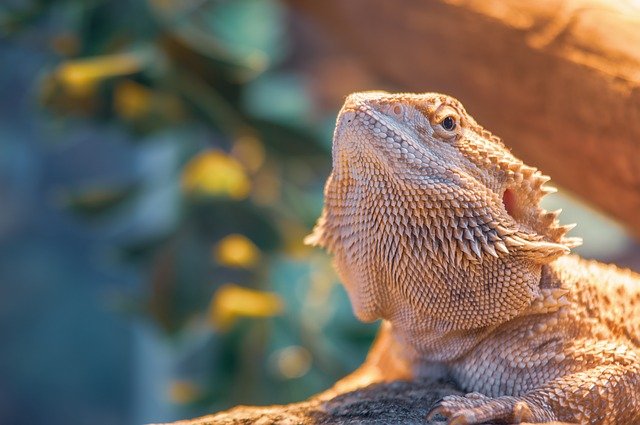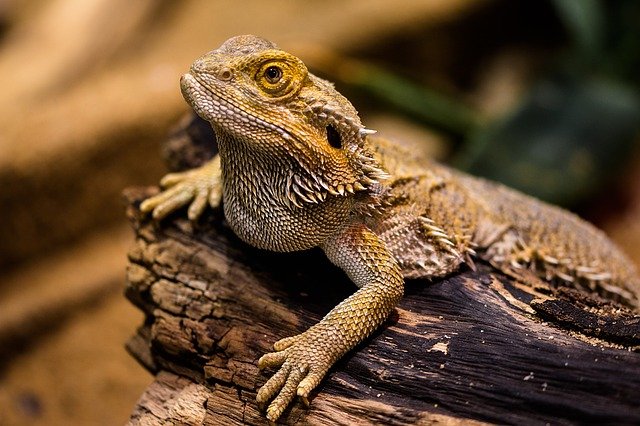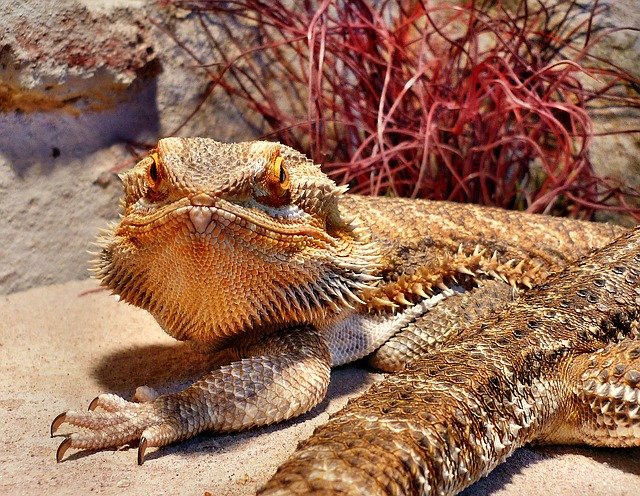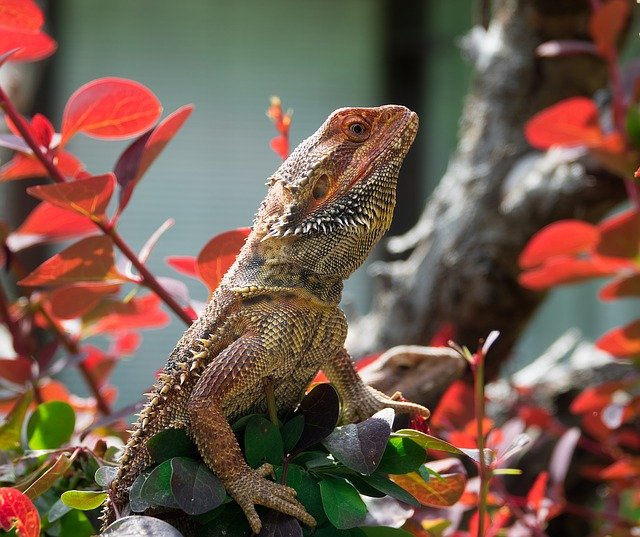Best Substrate For A Bearded Dragon
December 28, 2020

What's the Best Substrate for Your Bearded Dragon?
The best substrate for a bearded dragon is a very controversial subject within the bearded community. Everyone has very strong opinions on what they feel is the right substrate, but often, no one can agree on one. This can make it hard for a new bearded dragon owner to decide which substrate is best for their beardie. When picking out a substrate, it is important to choose one that is easy to maintain, and won’t have negative side effects on your reptile. I have broken down each substrate that bearded dragons can and cannot use, to help you decide which is best for both you and your bearded dragon.
Safe Bearded Dragon Substrate Options
The most important piece to consider when choosing a substrate is the safety of your bearded dragon. Regardless of what your local pet store tells you, not all substrates are safe. Oftentimes, the substrates recommended in pet stores are not always the best substrates to supply your bearded dragon with. The following substrates are all safe options for your bearded dragon.

Ceramic Tiles as Bearded Dragon Substrate
Believe it or not, ceramic tiles, just like the ones on your kitchen floors, are one of the best options for a bearded dragon’s substrate. Because there are no loose particles, there is no worry of impaction. A benefit to this kind of substrate is how easy it is to clean. If you need to spot clean, you can just wipe the mess up. Deep cleaning is easy as well since you can just remove the tiles and scrub them down in your sink!
These tiles are a one time purchase since they can easily be cleaned, and can be found at a hardware store like Lowe's. Be sure to measure the inside of your tank before heading out so that they can cut the tiles to the right size for you. Another benefit to ceramic tiles, is that they will absorb heat. This will ensure that your bearded dragon has a warm place to curl up on. Tile is also known to help keep your bearded dragon’s nails trimmed down.
Reptile Carpet as Bearded Dragon Substrate
Another bearded dragon substrate option is reptile carpet. This substrate can be found at almost any pet store as well as here on Chewy. It is sold in pre-cut sheets to fit most enclosures, and is easy to cut if your enclosure is an odd size. It is one of the safest substrates available, and it has no risk for impaction. Never use household or outdoor carpet for bearded dragons. They are both made of an entirely different material and can get caught in your bearded dragon’s nails, which can lead to the nail getting ripped off.
The downside to reptile carpet is that it can be more difficult to clean than ceramic tiles. When cleaning the carpet you will want to bleach it in a bathtub, and thoroughly rinse it out. It will need to be completely dry before being added back into your bearded dragon’s tank. Because of this, I recommend buying a second carpet so that you can easily swap out substrates when one is dirty. This way your bearded dragon isn’t left without substrate for hours while waiting for it to be clean and dry.
Clay as a Bearded Dragon Substrate
Excavator clay can be an excellent choice if you're looking for a more natural substrate option. This substrate is more compact than sand so you won't have to worry about compaction from loose particles, but it still gives your bearded dragon the option of digging. Excavator clay gives you the option of building complex tunnel systems and caves for your bearded. An important thing to note with this substrate is that it can take several days to dry when you first create your layout. Because of this you will need to have a separate space for your bearded to live in while you are waiting for it to dry. Theres a good brand on Chewy here, that will be perfect for your dragon!
Paper Towels as a Bearded Dragon Substrate
Paper towels are by far the cheapest substrate to choose from. They work well for easy cleaning since you can just throw them away and add new ones, but they don’t supply your bearded dragon with any form of enrichment. They aren’t great for holding in heat either. Crickets and other insect feeders tend to hide from bearded dragons underneath the paper towels. This kind of substrate is best as a temporary substrate while your bearded dragon is in quarantine or is in transition to a new substrate.
Substrates to Avoid
Here's a list of substrates that should never be supplied to your bearded dragon. These substrates are known to cause impaction, are extremely dusty, or otherwise dangerous to the health of your bearded dragon:

Sand For a Bearded Dragon’s Substrate
It can be tempting to use sand in your bearded dragon’s enclosure, after all, they do live on sand in the wild. The biggest issue with sand is that it is a loose substrate and bearded dragons are messy eaters. Sand is known to cause impaction when consumed. Impaction is blockage in the intestinal tract, which can lead to death if not treated by a vet. Calcium sand is NOT a good substitute for regular sand either. Pet stores try to fool you by telling you it's okay for your bearded to consume this sand because there is calcium in it, but it is still just as likely to cause impaction. Another huge issue with using sand as a bearded dragon substrate is bacteria. When you scoop your bearded dragon’s waste out of sand, you’re bound to leave some behind. This leftover waste will encourage bacteria growth in your bearded dragon’s environment.
Millet as Bearded Dragon Substrate
Millet can sometimes be found in pet stores offered as reptile bedding, however it is not suitable for bearded dragons. This substrate is typically ground up into loose particles that cause impaction when ingested. Another negative effect of millet is that it is prone to molding quickly. Like sand, it is also hard to clean and can lead to bacteria growth in your bearded dragon’s enclosure.
Aspen and Coconut Husk as Bearded Dragon Substrates
Aspen and coconut husk are very popular reptile beddings that can be excellent choices for some reptiles. Bearded dragons are not one of these reptiles. These substrates are known to hold in humidity, which can be great for some reptiles, but is bad for bearded dragons since they require a low humidity. Both aspen and coconut husk can cause impaction when ingested as well. On top of all of that, bearded dragons can get splinters when running and digging in wood chips. Overall, it's best to avoid any kind of wood chips as a bearded dragon substrate.
This post contains affiliate links that may pay me a commission when a sale is made. Affiliate commissions help me maintain this website, and I only recommend products that I trust.





Sending...